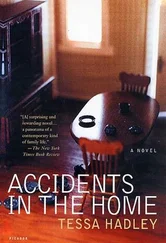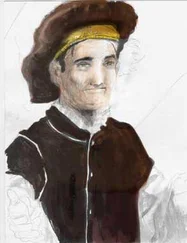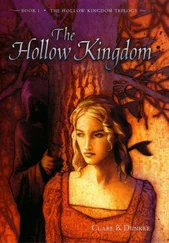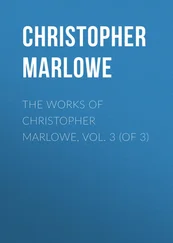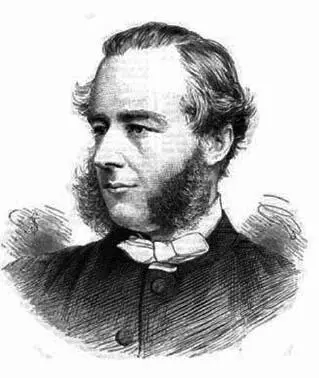
The clergy had gradually been replacing the squire as the keepers of parish history. An early local history manualurged clergymen to collect field names and look into the parish chest to find accounts from the Overseers of the Poor so they could write the history of ordinary people. Wigram was one of the more enlightened local historians, someone who would not restrict himself to title deeds and the genealogies of those in the Big House. He also cared about the folk and their customs: what they remembered and what they valued.
Tithes are almost as alien to most of us today as dragons, but baffling customs, grumbling farmers and greedy vicars added piquancy to life in your average village. For centuries tithes were paid in kind – in other words, the tithe on piglets was paid in piglets. As endless legal cases testified, what was owed to the church was often cause for much debate: at times desperate clergy, eager to increase their incomes, had been known to claim that stones in a field were subject to tithe. Others were said to have demanded tithe on the ‘ germins ’ or shoots growing from the roots of felled trees (although these anecdotes, told against the church, have the ring of the apocryphal, or at least exceptional, about them). In 1727, Alexander Popein his description of a fictional parish clerk’s memoirs jokes that there are ‘seventy chapters containing an exact detail of the Law-suits of the Parson and his Parishioners concerning tythes, and near an hundred pages left blank, with an earnest desire that the history might be compleated by any of his successors, in whose time these suits should be ended’.
There were two main types of tithe: great and small. Great tithes were paid on the produce of the land – grain, hay, fruit, timber – and these usually went to the rector, who in the Pelhams, owing to a shady deal done in 1160, was the Treasurer of St Paul’s Cathedral. After the dissolution of the monasteries in Henry VIII’s reign, some third of all great tithes in the country ended up in the hands of lay rectors, who had nothing to do with the church. Once tithes could be bought and sold like any other property, the moral and religious argument for paying them became increasingly hard to make.
The small tithes were paid on those things resulting from the produce of the land – pigs, chickens, milk, cheese, eggs, fatting beasts, geese and bees. In the Pelhams, by custom, the small tithes also included potatoes, turnips, clover, herbs and aftermouth (grass from the second mowing). These were paid to the rector’s representative on the ground, the vicar, who was wise to keep detailed accounts and records of parish customs. In the 1730s, the vicar of Furneux with Brent Pelham, Reverend Charles Wheatly, did just that. On 4 May 1732, Wheatly visited the aptly named Farmer Pigg to claim his tithe of seven lambs. By this date, he would normally accept a cash payment, but the two men were unable to agree on a price. Wheatly set downwhat happened in his account book: ‘[Mr Pigg] had 75 lambs, offered 3 s. a piece for my seven: But I refused it & drew them out in kind … I took one Ram, 5 Ewes & one Weather [sic]: & in lieu of the tithe of the remaining 5 lambs, I took a lame infirm one.’
Other parishioners paid with a fat goose on Lammas Day, in honey or wax or bushels of apples. Tithe eggs were due in Lent: two for every hen and three for every cock, ‘whether they be fowls ducks or turkeys’ according to custom. Some paid by work: a William Keene settled his tithe by ‘making the hay of the Close’. Among the more unusual forms of payment were brass ‘nozels’, pricked bricks or bottles of tent – a low-alcohol Spanish wine used for the sacrament.
The tithe customs had been written down at much the same time as the first references to the exploits of Piers Shonks. In the reign of Queen Elizabeth, William Bishop, the vicar of Brent Pelham, sued Richard Daltonfor seven years’ worth of tithes on the underwood, that is the smaller woodland trees that were used for fuel or to make poles or fences and such like. Dalton, however, knew the customs of his village, which included such arcane and impenetrable rules as: ‘If a lamb was sold with its Damme between Lady Day and St George’s Day the tithe for every lamb would be 4 d.’ Another dictated that not all the underwood in the Pelhams was tithable; they were usually paid on coppice wood, lopped wood and wood from springs and hedgerows, but they were not paid on any underwood that was used to repair hedges and fences. And so Dalton won the case, and all the customs that were confirmed and written down at the time would still be guiding the villagers and confusing the vicar when Master Lawrence felled the yew tree centuries later.
Tithes, like old stories, were under threat in the early nineteenth century. They were gradually monetised, stripped of their interest, homogenised and made intangible. The traditions that went with them would soon fade from memory. Over the years, clergy and tithe farmers found it increasingly tiresome to keep track of all the ringes of wood and bushels and pecks of barley. The counting, weighing, transport, storage and use of tithes in kind could be costly and burdensome. It distracted incumbents from less worldly concerns and it was in most people’s interest to convert tithes to regular cash payments. This had happened in many places in a piecemeal way since the Middle Ages, and by the eighteenth century many tithe owners agreed on fixed sums known as compositions. For a while, some agreed a fixed sum, but still settled their bill in kind. Like Richard Haggerwho paid his annual 3 s . 6 d . in honey and apples.
By the 1830s, it was observed that no tithe had been collected in kind in living memory. Wrested from tradition, they would eventually be easier to do away with. Throughout the early years of the nineteenth century, there was growing agitation nationally to reform the system. Tithes were accused of being a tax on industry and land improvement and caused particular resentment among the growing ranks of non-conformists, who did not see why they should be financing the Church of England. As agricultural methods changed, it became ever harder to decide whether something was tithable and in what way. Turnips might be tithable, but then again not, it depended on whether they were grown to feed animals or people. How about partridges? Acorns? Charcoal?
When Master Lawrence felled the yew tree, the last days of the old tithe system had come, but vestiges of it lingered on, and traditions such as tithe luncheons were still around thirty years later, when two members of his family played a prominent role at them. The brothers Thomas and James Lawrence were variously master carpenters, constables, sub-postmasters, grocers, innkeepers and, for many years, parish clerks in both Furneux and Brent Pelham. One or both of them were also good storytellers.
Before his death in 1907, the then Canon Wigram, casting his mind back some forty years to his tithe luncheons, wrote two letters to W. B. Gerish about Shonks that provide several clues to the identity of the man who told him about the yew tree. His informant was a Master Lawrence, who was not only related to the woodcutter, but also remembered the tree. This Lawrence worked at the post office and was also his parish clerk, which should narrow things down, but describes both Thomas in Furneux and his brother James in Brent Pelham. Perhaps both regaled Wigram with village history, but in Wigram’s last known letter to Gerish, written in July 1905, which he begins by saying he has already told Gerish everything he can about Shonks, we learn that it was Thomas Lawrence who told Wigram old stories about the village, and so he emerges as the prime candidate for tale-spinner-in-chief.
Читать дальше


